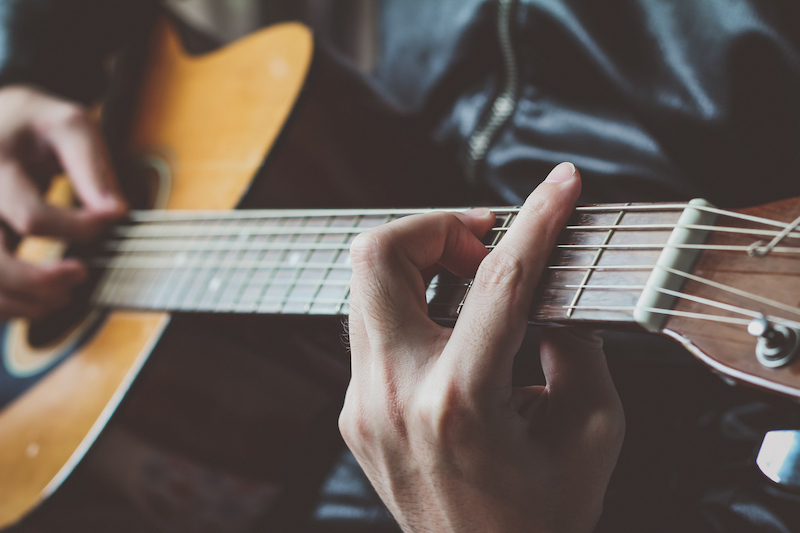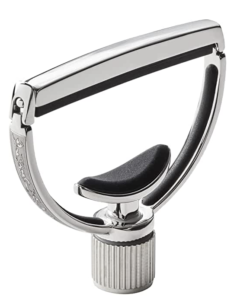This article will show you tips for playing barre guitar chords. You will learn the basic strategies and some useful tips for improvement.
The Basic Technique to Play Barre Chords (also known as bar chords) involves using the index finger to press from two up to six strings. This creates a guitar sound that includes several strings pressed on the same fret.
In a sense, using a barre chord is similar to use a guitar capo. As in that case, the goal is to be able to reuse simpler chord shapes.
The Reason for Using Barre Chords
The barre chord are important because they allow one to create a guitar chord in any area of the fretboard.
With simple chords, there are frequently open strings. These chord positions may work well in one position of the neck, but won’t work anymore if transposed to another area.
Using barre chords, however, you don’t need to make additional effort to play in a different position.
For example, playing the open G chord you can use a position like this:

But this position cannot be transposed to G# (unless we use a barre with it). On the other hand, if we use this barre chord:

It is extremely easy to transpose it to G#: you just need to move your barre from the 3rd to the 4th fret.
Tips to Execute the Barre Chord
The most difficult part about barre guitar chords is its execution, especially for beginners. If you don’t have the practice, it seems difficult to use your index finger to bar the whole fret.
However, there are some tips that make it very easy:
First, not all barre chords will bar the 6 strings. Some of these positions can bar no more than two strings.
Therefore, it is important to concentrate on pressing only on the strings that really matter.
For example, in the barre G chord displayed above, the strings that need to be pressed by the first finger are 1, 2, and 6. This means that you can concentrate in pressing only these three strings, which is easier than having to press all strings.
Using Another Finger for Support
Another tip is that, when you need to press a lot of strings, you can use your middle finger to help. By doing this, you can relief the pressure on the index finger, using the help of the middle finger.
To practice this, use your index finger to press all six strings. Then, try to put your middle finger on top of the index finger. Notice that this reduces the force needed on the index finger.
Cases to Avoid a Barre Chord
A third tip is that you can sometimes avoid a barre chord in some cases. For example, some chord shapes can be repeated even without a barre chord.
The example bellow is a C dim chord. You can move this chord around in the guitar neck without even using a barre chord.

Some other chords can be performed using a barre chord or not. A good example is B 7b5. It can be fingered as:

Or you can use this shape without a barre:

Learning More About Guitars
If you want to learn more about guitars and chords, you should get our free guitar course. This guitar course is a complete course developed so you can master all the basics of guitar playing. Topics include:
- How to use barre A chords.
- Playing single notes in the instrument.
- How to read guitar tabs.
- And much more.
To get you copy, just click here and request your free course in PDF format. The course will be send to your email address.

